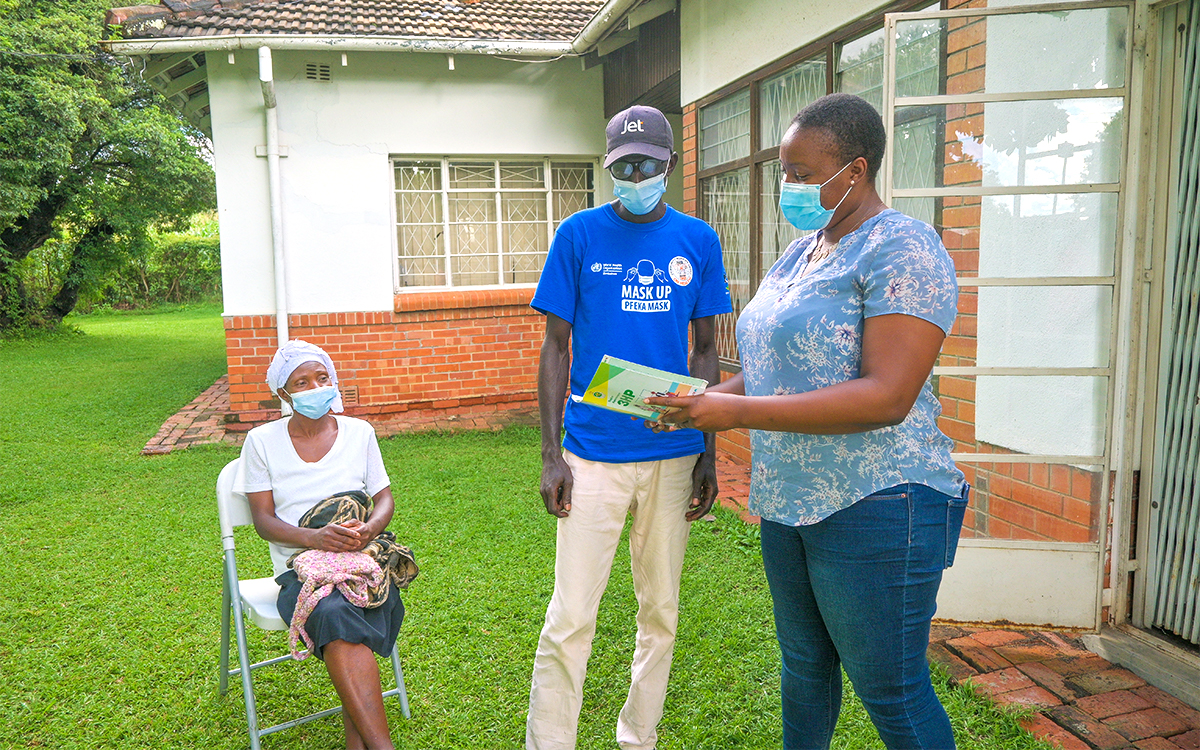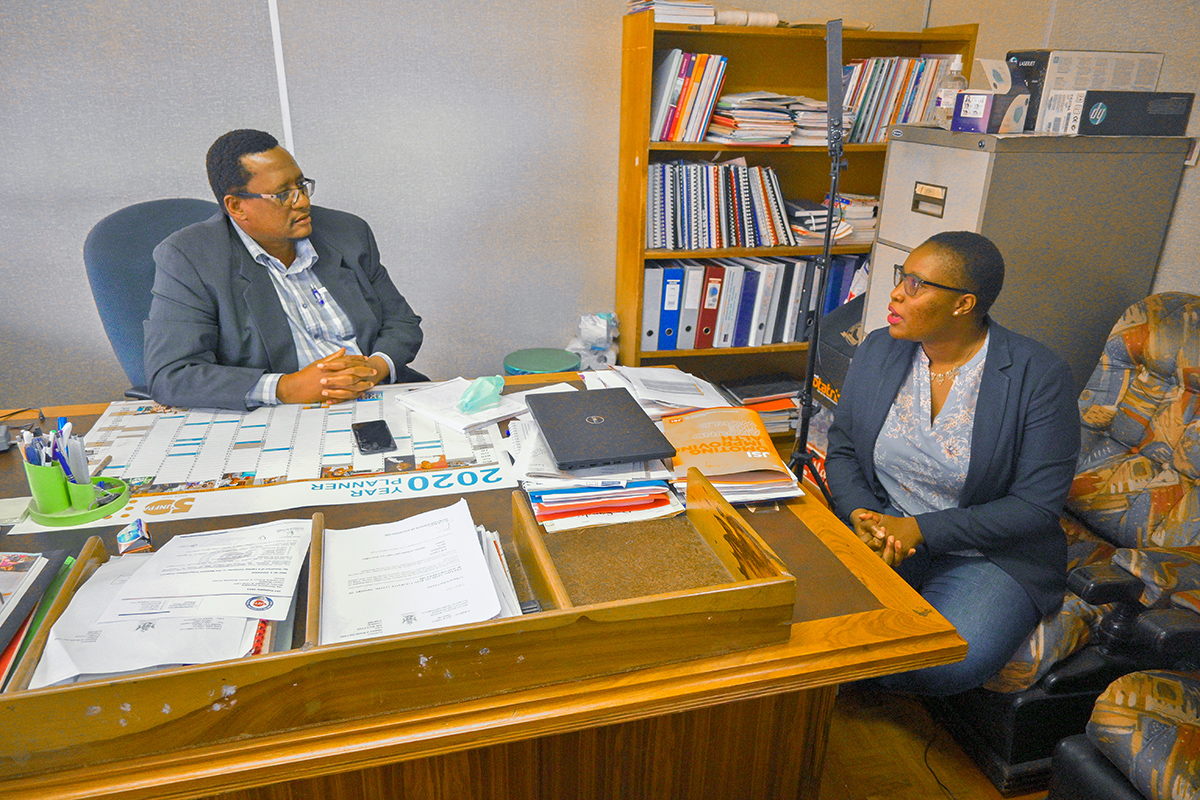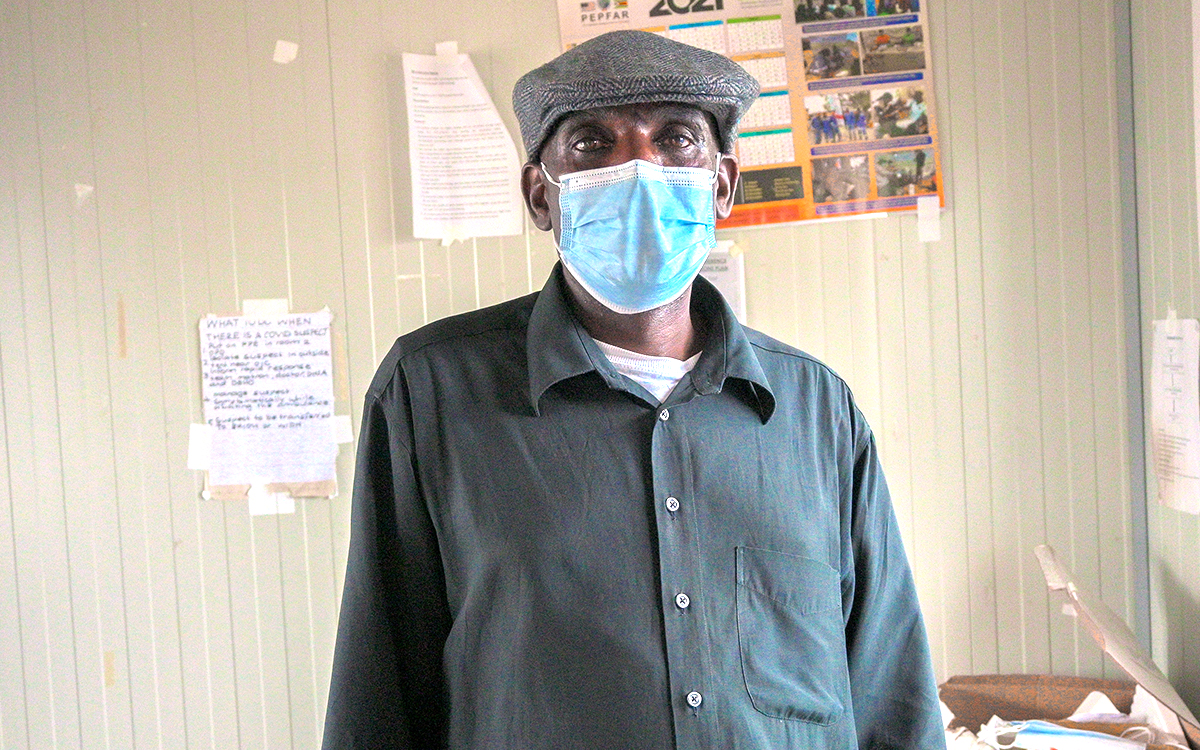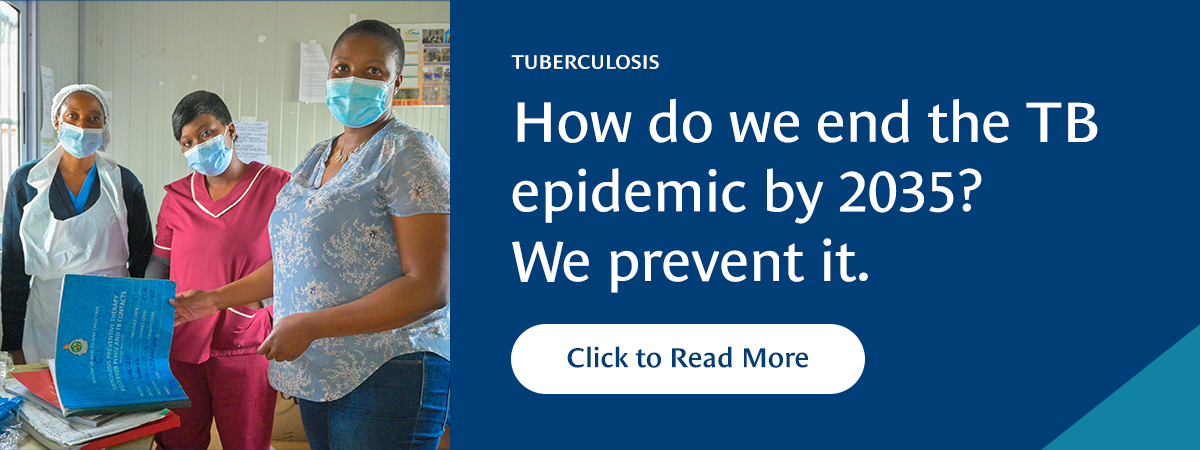Tuberculosis can be prevented with treatment. But in Zimbabwe, long treatment duration and the fear of painful side effects made preventative therapy a hard sell for some patients.
CHAI’s Makaita Gombe explains the difference a new treatment has made for the people she works with every day.
In January 2017, Stanley started coughing, experiencing joint pain, and night sweats. He also lost his appetite and almost 20lbs (9kg) in less than a month. Stanley lives with HIV but was on antiretroviral therapy and effectively managing the disease. He consulted his local health facility and was advised to get tested for tuberculosis (TB). He tested positive and was immediately put on the standard six-month treatment. After two weeks, he started feeling better. A month later, he was tested again and the results were negative. But he was advised to continue his regimen to prevent a resurgence of the disease.
In Zimbabwe, thousands of people living with HIV are at high risk of contracting TB. However, many of them are not aware of the importance of TB prevention, nor what treatment options are available to them. This is where Stanley comes in. He now volunteers at his local facility, giving health talks at the start of the day about the importance of sticking to HIV and TB treatment regimens.
Stories such as Stanley’s motivate me to do my work to avert death and illness, particularly in underserved communities.
I work with clinicians at health facilities and policy makers within the Ministry of Health and Child Care (MOHCC) every day, providing programmatic and technical support for the improvement of HIV and TB prevention, diagnostics, and treatment. My background is in economics and statistics, particularly decision sciences, and I am constantly looking for opportunities to optimize processes, reduce costs, and ultimately save lives. The work also includes engaging patients and civil society organizations to ensure that community voices are heard and incorporated into programming for a patient-centered approach.

Makaita Gombe discusses the 3HP treatment plan with patient volunteer, Stanley.
Prevention hampered by difficult regimen, side effects
The World Health Organization estimates that one-fourth of the world, or approximately 1.7 billion people globally, have latent TB and represent a neglected reservoir of the disease. Additionally, the WHO estimates that five to 15 percent of adults with latent TB develop active TB later in their life. The chances that infection will progress to active disease depends on a few factors, including pre-existing health conditions. People living with HIV are among those most at risk of progressing from latent to active TB.
Preventative treatment is proven to reduce the chances of progression from latent to active disease by 60 and 90 percent.
In Zimbabwe all people living with HIV are offered TB preventive therapy every three years to eliminate latent infection. This is done because the risk of latent infection progressing to active TB is up to 37 times higher for people living with HIV.
But for a long time, the only prevention option available was Isoniazid Preventive Therapy (IPT), a single pill taken daily for six months. Patients complained about the pill burden associated with this regimen as well as the side effects that they experienced due to prolonged exposure to Isoniazid.
Sticking to a TB prevention treatment plan is not always easy. The regimen requires the patient consume enough nutrients in their diet to reduce the risk of side effects such as peripheral neuropathy, lethargy, and skin rash. Ironically, TB risk and prevalence is high among the poor, who cannot always afford the nutritional support they need. In addition, TB prevention treatment has been known to have other less prevalent side effects, such as liver toxicity.
Despite the drawbacks, when Stanley became eligible for IPT in 2019, he agreed to take it immediately, telling me that, “I did not want a repeat of the experience I had with TB a few years ago!”

Makaita Gombe meets with Dr Charles Sandy, Director, National Tuberculosis Program.
Making it easier for patients to prevent TB
CHAI is working with the Zimbabwe government to introduce a new, easier prevention regimen for patients: three months of weekly Isoniazid and Rifapentine, known as 3HP. The regimen cuts treatment time in half.
In a discussion with the Deputy Director at the National AIDS and TB unit, he told me that adopting 3HP was largely motivated by the plight of people living with HIV who are taking antiretrovirals for life and already have a heavy medication burden. He said that finding and treating cases will not be enough if we are to end tuberculosis for good – we must also make it easier for patients to begin – and complete – TB preventative regimens.
To help bring 3HP to market, CHAI worked with clinicians and civil society organizations (CSOs) to adapt treatment guidelines to include the new medication as well as develop educational materials for patients to better understand the benefits. We supported the government with the national rollout of the new treatment, as well as the subsequent training of health workers.
Thanks to this approach, we have seen a three-fold increase in people living with HIV starting preventative treatment at facilities offering 3HP. Patients also experienced fewer side effects on 3HP with only three out of 3,697 patients stopping treatment. Previously, only 39 percent of patients on preventative therapies at the same facilities would complete their regimens.

Patient volunteer Andrew.
Prevention over cure
The value of this approach really hit me during a recent conversation I had with another patient volunteer, Andrew. He explained that he had witnessed several friends who developed TB, begin treatment but then stop taking their medicine as soon as they started to feel better — and subsequently die.
Andrew knew that he was at increased risk for TB because he has HIV. He decided that prevention was better than cure. But he was nervous – the standard six-month regimen of IPT meant adding more pills to the dozen he already took every week, and the side effects could be awful as he had previously experienced a feeling of weakness in his joints on IPT.
However, a nurse at his local clinic recommended 3HP as an alternative. The regime required only 12 doses – one a week – over three months. He completed the regimen in 2020, without incident. He even encouraged his three daughters, who also live with HIV and are stable on antiretroviral therapy, to take 3HP. Since then, he’s become an advocate for TB preventative treatment.
I have worked with patients in the HIV and TB communities for years. The main feedback I hear from these communities is for the government to understand the implications of health policies on the daily lives of people living with HIV and TB. The government should consider pill count, treatment duration, efficacy, and safety when rolling out treatment. We should also work collectively – the government, healthcare workers, civil society organizations, and partners like CHAI – to provide a strong support system for patients to keep to their treatment regimens.
This is why I appreciate volunteers like Stanley and Andrew who realize the importance of working as a community to prevent the unnecessary deaths of patients from TB. When we work together, it ceases to be an advocacy for the adoption of new innovative medicines but rather about increasing access to these regimens to save as many lives as possible – everyone wins!






